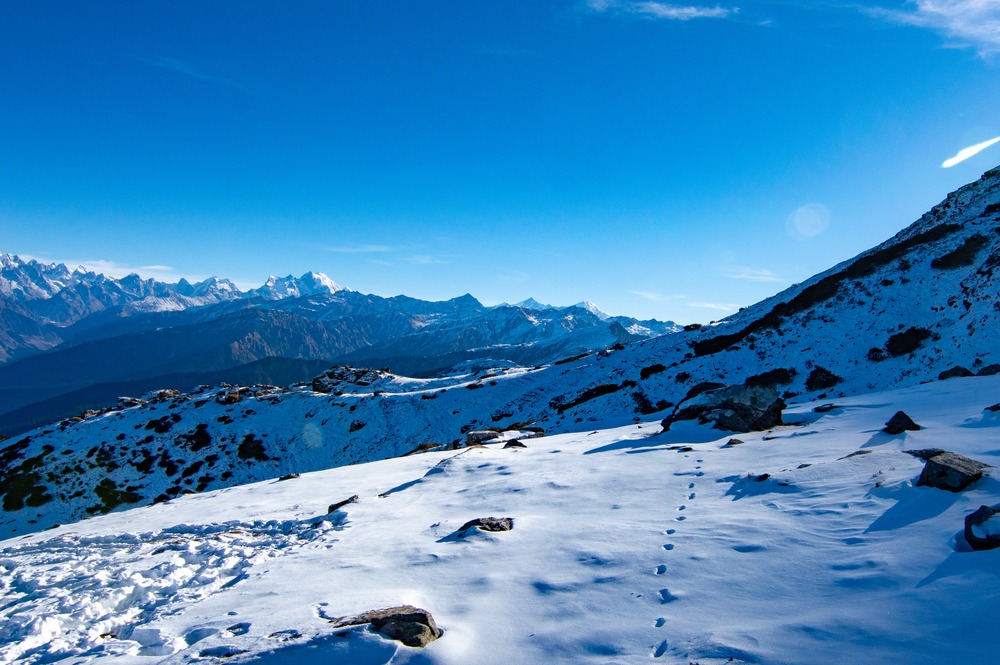If you’ve been dreaming about trekking in the Himalayas but don’t want something too extreme, the Kedarkantha trek is probably the best pick. I’ll walk you through everything you need to know about the Kedarkantha trip package—costs, itinerary, inclusions, exclusions, and the kind of experience you can expect.
Why Kedarkantha Trek?
Kedarkantha is one of those treks that feels perfect for both beginners and experienced trekkers. It is situated in Uttarakhand’s Govind Pashu Vihar National Park at an altitude of about 12,500 feet. What I personally love about this trek is how balanced it is—snow-filled trails in winter, lush green forests in summer, and breathtaking summit views that include peaks like Swargarohini, Bandarpoonch, and Black Peak.
The trek is not overly tough. It takes around 5 to 6 days and covers about 20 km in total. So, even if you’re a first-timer, it’s very doable with the right guidance.
Best Time to Go
Although Kedarkantha is a year-round trip, winter is the most spectacular time of year. The entire trail is blanketed in snow from December to April, creating a mystical white paradise. If you’re someone who has always wanted to experience snow trekking, this is the perfect opportunity.
- Winter (Dec–April): Best for snow lovers.
- Spring (April–June): Forests and meadows come alive with greenery and flowers.
- Autumn (Sept–Nov): Clear skies, less crowd, great views.
Duration of the Trek
The standard Kedarkantha trek package usually lasts 5 nights and 6 days. Here’s a typical breakdown of the itinerary:
- Day 1: Drive from Dehradun to Sankri (the base village).
- Day 2: Sankri to Juda Ka Talab campsite.
- Day 3: Trek to Kedarkantha Base Camp.
- Day 4: Early morning summit push to Kedarkantha peak and back to Hargaon campsite.
- Day 5: Trek down to Sankri and drive back.
- Day 6: Return journey to Dehradun.
Some itineraries may squeeze it into 4 nights if you’re short on time, but I’d recommend the 6-day plan for a more comfortable experience.
Cost of Kedarkantha Trek Package
Now, let’s talk about what most people want to know first—the cost. Depending on the operator and season, the average cost of a Kedarkantha trek package ranges from ₹6,000 to ₹9,500 per person.
The price usually includes:
- Accommodation (camping/tents/guesthouses)
- Meals during the trek
- Trekking permits and fees
- Guide and support staff
- Camping gear (tents, sleeping bags, mats)
But here’s what’s not included:
- Transport from Dehradun to Sankri (often costs ₹1,000–₹1,500 one way per person if shared cab is taken)
- Personal expenses (snacks, extra meals, etc.)
- Trekking shoes and personal gear (you need to carry your own)
- Emergency expenses (like evacuation or medical needs)
So, if you add up everything, expect the overall trip cost to be around ₹8,000–₹12,000 per person, all inclusive.
Which Trekking Company to Choose?
Now, if you’re wondering who to book with, I’d suggest going with a reliable trekking company rather than trying to manage it all on your own. I’ve had a good experience with The Searching Souls (TSS) for this trek and thier kedarkantha trek package was too affordable. They aren’t the cheapest, but what I liked about them was their experienced guides, safety measures, and how they manage logistics smoothly.
Another reason I’d recommend them is because Kedarkantha attracts a lot of first-time trekkers, and having a professional team ensures you don’t have to stress about camping, food, or emergency support. They handle everything, leaving you free to just enjoy the trek.
How to Reach the Starting Point
The base village Sankri is about 200 km from Dehradun. You can either:
- Take a shared cab arranged by your trek operator.
- Or travel by bus from Dehradun to Sankri (though buses can be less reliable).
It’s roughly an 8–10 hour drive, so most trekkers prefer starting early morning from Dehradun.
Fitness & Preparation
Don’t undervalue Kedarkantha, despite the fact that it is thought to be beginner-friendly. Trekking at high altitudes means thinner air and colder temperatures. You should at least start walking/jogging 3–4 km daily for a few weeks before the trek. Also, invest in proper gear—especially good trekking shoes and layered winter clothing.
Food & Stay During Trek
Expect simple yet wholesome meals—rice, chapati, dal, vegetables, sometimes a sweet dish. The campsites are set up at scenic spots, and staying in tents under the starry Himalayan sky is honestly one of the best parts of the trip. Some operators may also provide homestays in Sankri village for the first or last night.
Final Thoughts
The Kedarkantha trek is truly worth every penny. Whether you’re chasing your first snow trek or just want a Himalayan experience that isn’t too harsh, this one checks all the boxes. With a decent budget, proper preparation, and the right trekking company, you’ll come back with unforgettable memories and stunning summit views.
FAQs
1. How difficult is the Kedarkantha trek?
It’s considered easy to moderate. Perfect for beginners with basic fitness.
2. What’s the best season for snow?
December to March is when you’ll find thick snow on the trail.
3. Do I need to carry my own tent?
No, your trek operator provides tents and sleeping bags.
4. Is Kedarkantha trek safe for solo travelers?
Yes, provided that you make your reservation through a reputable trekking firm.
5. Can children do this trek?
Kids above 10 years with good fitness can manage, but always consult your trek operator.



